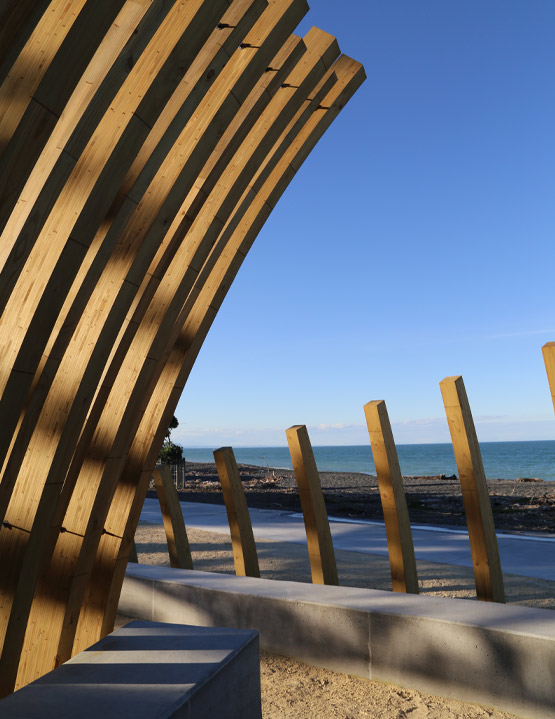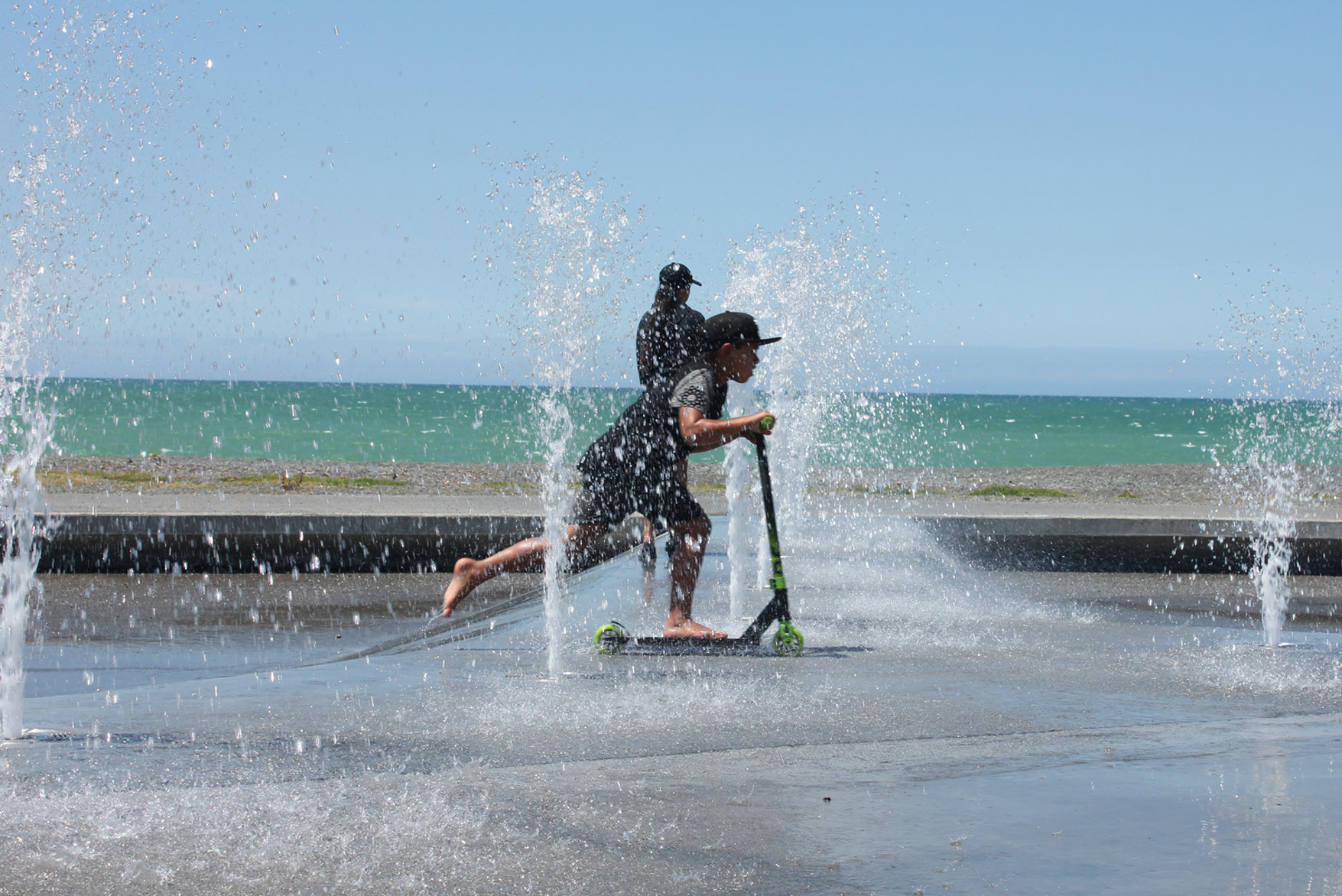Connecting a city to its coastline.
The redevelopment of this key waterfront site on Marine Parade in Napier has given new life to the area. The city is now connected to its coastline and a waterfront carpark has been replaced with a significant public space that reflects the natural and cultural landscape of the bay.
With the adjacent former MarineLand site having been redeveloped into a multi-purpose skate, event and entertainment facility, this new coastal public space injects activity and energy onto the city’s coastal edge. It also provides coastal pathway users a reason to stop and engage. The park includes a mix of complementary spaces, including structures and vegetation that offer shelter and coastal outlooks; gardens and undulating lawn spaces engaging with the sea and city; a multi-sports court; and a series of reflective and interactive water features that are threaded through the site, providing something for all parts of the community and visitors alike.





